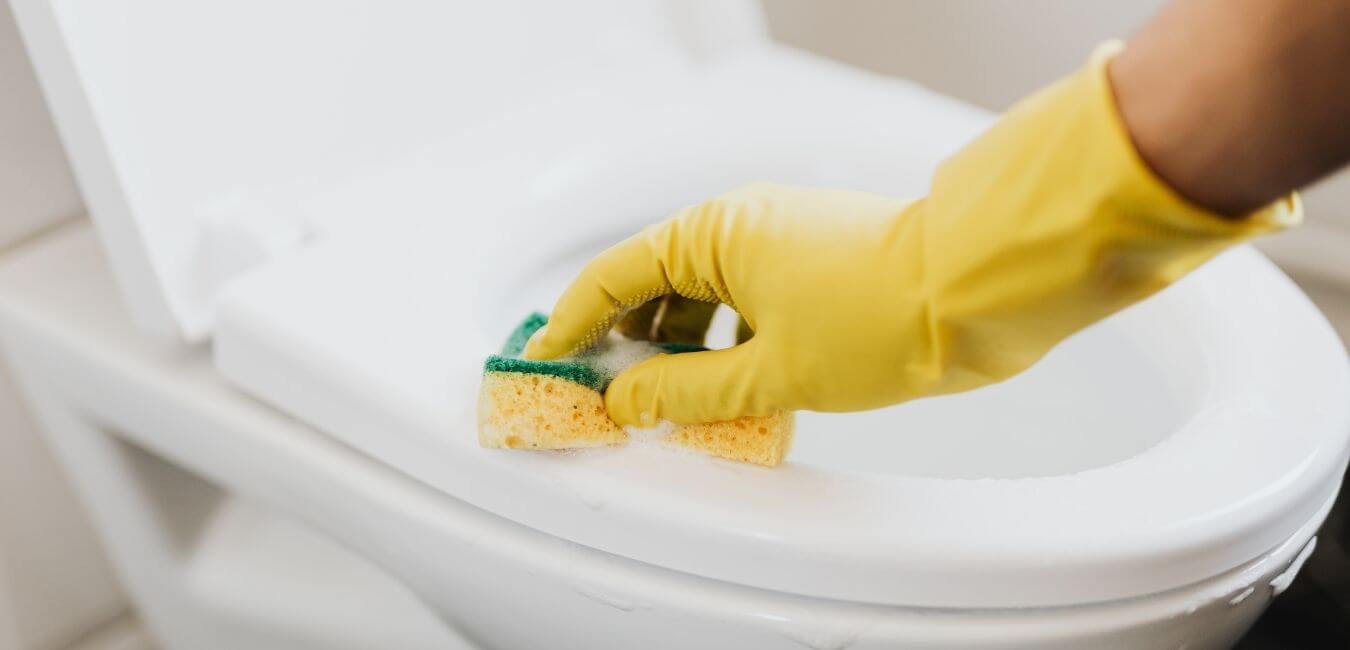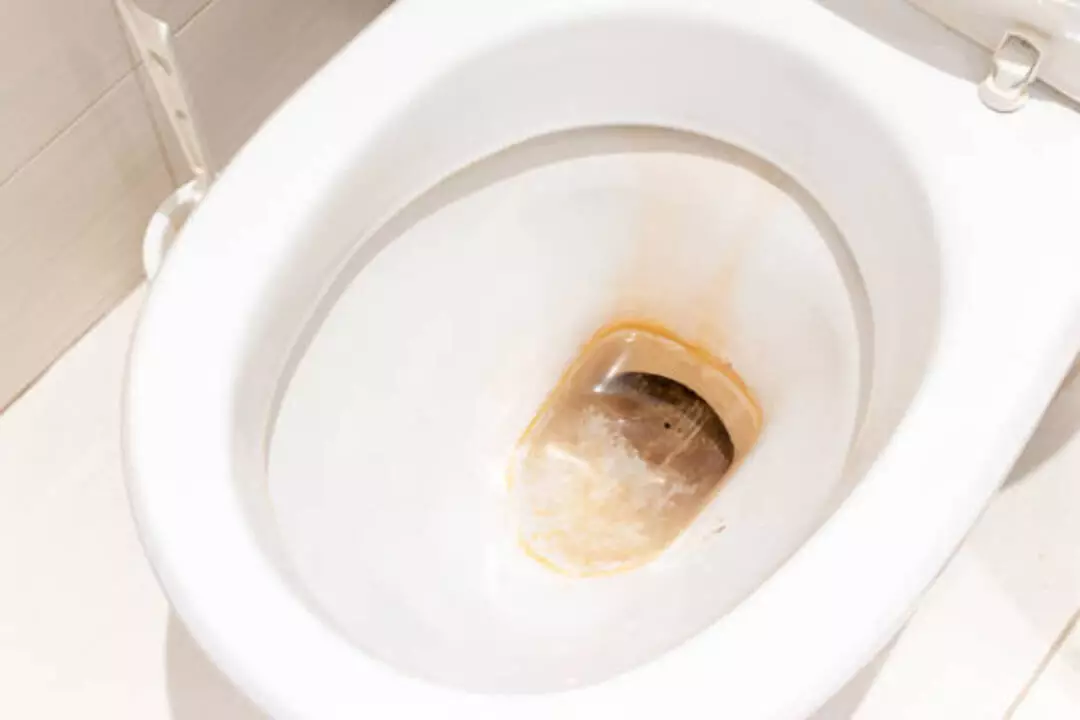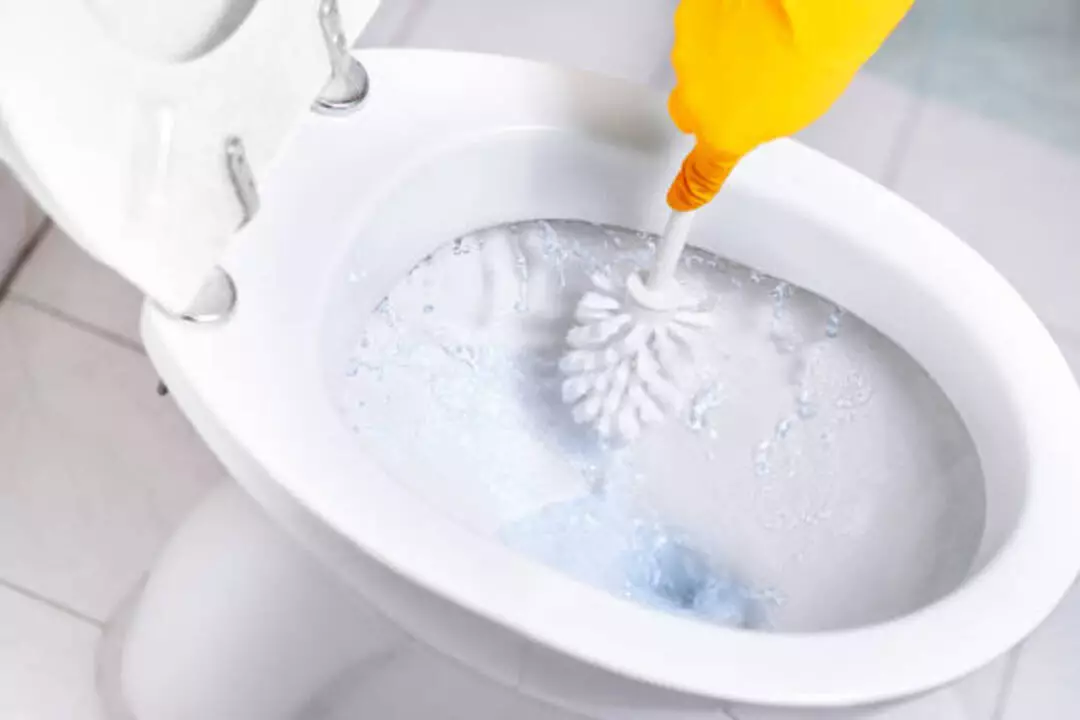Are you tired of spending hours scrubbing your tile and grout, only to see mediocre results? It turns out that poor technique could be sabotaging your hard work.
This essential guide will introduce easy-to-implement methods that can transform the way you clean tiles and grout quickly and effectively.
Get ready to discover a world where brilliant floors are just a few simple steps away!
KEY INFORMATION
- Regular cleaning is important to keep your tiles and grout looking fresh and prevent stains or damage.
- Different types of grout and tile require specific cleaning methods, so it’s important to know what you have.
- Microfiber cloths are a great tool for fast and streak-free tile and grout cleaning.
- Using the right tools, like a grout cleaning brush and tile scrubber, can make the cleaning process more efficient.
- Daily maintenance like sweeping or vacuuming can help prevent dirt buildup in the grout lines.
- Deep cleaning methods such as steam cleaning or using baking soda and vinegar can effectively remove stubborn dirt and stains.
- Preparing the area by removing obstacles and protecting surrounding surfaces will make the actual cleaning process easier.
- Choosing the appropriate cleaning solutions based on your specific needs can yield better results.
Understanding Grout and Tile Cleaning

Regular cleaning of grout and tile is essential to maintaining their appearance and longevity. There are different types of grout and tile, each requiring specific cleaning methods. Additionally, common dirt and stains can accumulate on surfaces over time, making regular cleaning even more important.
The importance of regular cleaning
Regular cleaning helps your tiles shine bright. Plus, your grout stays in good shape longer. Dirty grout can spoil the look of clean tiles. Grime and dirt love to stick to it. They can also cause stains or damage over time.
Washing tiles every day keeps away such harm. In fact, just a quick mop after bathing or cooking does the trick! No need for hours spent on scrubbing each week. Smart moves like these keep your home looking neat and fresh all the time.
Types of grout and tile
There are different types of grout and tile that you should be aware of when it comes to cleaning. Grout can be made from cement, epoxy, or urethane, with cement being the most common type used in residential settings.
Cement-based grout is porous and can stain easily if not properly sealed. Epoxy and urethane grouts are more resistant to stains and moisture.
When it comes to tiles, there are various materials such as ceramic, porcelain, natural stone (like marble or granite), and glass. Each type of tile has its own characteristics and requires specific cleaning methods.
Ceramic tiles are durable but can be prone to scratching. Porcelain tiles are highly durable and water-resistant. Natural stone tiles require special care due to their porous nature, while glass tiles need gentle handling as they can chip or crack easily.
Common dirt and stains
Dirt and stains on grout and tile are common problems that can make your floors look dirty and worn out. Some of the most common types of dirt and stains you may encounter include mud, food spills, soap scum, mold, and mildew.
These substances can build up over time and be difficult to remove if not addressed promptly. It’s important to regularly clean your grout and tile to prevent these issues from worsening.
By using the right cleaning techniques and solutions, you can easily get rid of common dirt and stains, keeping your floors looking fresh and clean.
Essential Tools for Fast Cleaning
To ensure fast and efficient tile and grout cleaning, you’ll need essential tools such as a grout cleaning brush, microfiber cloths, a tile scrubber, and protective gear.
Grout cleaning brush
To effectively clean grout, a grout cleaning brush is an essential tool. The bristles of the brush are designed specifically to reach into the small crevices and remove dirt and stains from the grout lines.
It’s important to choose a brush with stiff bristles for better scrubbing power. When using the grout cleaning brush, apply some pressure and scrub back and forth along the grout lines.
This will help loosen any buildup or discoloration on the surface. Remember to also regularly clean and maintain your grout cleaning brush to ensure its effectiveness over time.
Microfiber clothes
Microfiber cloths are essential tools for fast tile and grout cleaning. These special clothes are made from tiny fibers that can trap and remove dirt, dust, and grime with ease. They are highly absorbent, making them perfect for wiping away spills and excess moisture from tiles and grout lines.
One of the main advantages of microfiber cloths is that they don’t leave streaks or lint behind like traditional cotton towels or paper towels. This means you can achieve a streak-free shine on your tiles without any extra effort.
Additionally, microfiber cloths are reusable and durable, so you can wash them after each use and use them again for future cleanings.
When using microfiber cloths for tile and grout cleaning, it’s important to remember to avoid using fabric softeners or bleach during the washing process. These substances can reduce the effectiveness of the cloth’s fibers over time.
Instead, simply toss them in the washing machine with mild detergent.
Tile scrubber
A tile scrubber is an essential tool for fast and efficient tile and grout cleaning. It helps to remove stubborn dirt, stains, and grime from the surface of tiles and in between grout lines.
The bristles of the scrubber are designed to reach into tight spaces and agitate the dirt, making it easier to remove. When using a tile scrubber, make sure to apply gentle pressure and use back-and-forth motions for effective cleaning.
Remember to choose a scrubber with soft bristles to prevent scratching delicate surfaces. Using a tile scrubber along with the right cleaning solutions can help you achieve sparkling clean tiles and fresh-looking grout in no time.
Protective gear
To ensure your safety while cleaning tile and grout, it’s important to wear protective gear. This includes gloves to protect your hands from chemicals and germs, as well as goggles to prevent any splashes or debris from getting into your eyes.
Additionally, wearing a mask can help filter out any dust particles or fumes that may be harmful to breathe in. Remember, taking these simple precautions can go a long way in keeping you safe during the cleaning process.
Fast Cleaning Techniques
To keep your tiles and grout looking clean and fresh, it’s important to use fast cleaning techniques that efficiently remove dirt, grime, and stains. Try using daily maintenance methods like sweeping or vacuuming to prevent debris from settling into the grout lines.
For a deeper clean, consider steam cleaning or using DIY grout cleaners made with baking soda and vinegar. When dealing with tough stains, apply caustic cleaners or try a mixture of lemon juice and baking soda for effective results.
Daily maintenance
To keep your tiles and grout looking clean and fresh, daily maintenance is essential. Start by sweeping or vacuuming the tiled areas to remove any loose dirt or debris. Then, use a damp microfiber cloth or mop to wipe down the tiles, focusing on high-traffic areas and spots prone to spills.
For light stains or dirt buildup, mix a solution of warm water and mild dish soap and gently scrub the tiles with a soft brush. Rinse thoroughly with clean water afterward. It’s important to avoid using abrasive cleaners or tools that can scratch the tile surface or damage the grout.
By taking these simple steps every day, you can maintain the cleanliness of your tiles and grout for longer periods of time.
Deep cleaning methods
To deep clean your grout and tile, there are a few effective methods you can try. Steam cleaning is a popular option, as it uses hot steam to loosen dirt and grime without the need for scrubbing.
Oxygen bleach is another method that can brighten your tile and remove tough stains. You can also create a paste using baking soda and vinegar to effectively clean your grout. These deep-cleaning methods are perfect for tackling stubborn dirt and stains on your tile and grout surfaces.
Removing tough stains
Are you struggling to remove tough stains from your tiles and grout? Don’t worry, we’ve got you covered. When it comes to stubborn stains like mold, mildew, or grease, there are effective methods you can use.
One option is to make a paste using baking soda and hydrogen peroxide. Apply the paste to the stain, let it sit for some time, then scrub gently with a brush. Another method is using oxygen bleach.
Mix the bleach with water and apply it to the stained area. Let it sit for a while before scrubbing away the stain. These techniques have been proven to be efficient in removing tough stains without causing damage to your tiles or grout.
Tips for Efficient Cleaning

Prep the area by removing any obstacles and protecting surrounding surfaces.
Prepping the cleaning area
Before you begin cleaning your tile and grout, it’s important to properly prepare the area. Start by removing any loose dirt or debris from the surface using a broom or vacuum cleaner.
This will prevent these particles from being pushed into the grout during the cleaning process. Next, dampen the surface with water to help loosen any stubborn stains or dirt.
If you’re dealing with particularly tough stains, you may want to pre-treat them before starting the cleaning process. You can use a mixture of baking soda and water to create a paste and apply it directly to the stain.
Let it sit for a few minutes before scrubbing it gently with a brush.
Remember that different types of tile and grout require different cleaning solutions, so be sure to check what is recommended for your specific materials. It’s also important to ensure good ventilation in the area while cleaning, as some cleaners can release strong fumes.
Using the right cleaning solutions
To ensure fast and effective tile and grout cleaning, it is crucial to use the right cleaning solutions. Using dish soap or regular household cleaners may not yield the desired results.
Instead, opt for a mixture of baking soda, hydrogen peroxide, and dish soap. This combination has been tested and proven to be highly effective in removing dirt and stains from grout while being gentle on tiles.
Remember to always follow the instructions provided by the manufacturer when using commercial cleaners. By choosing the appropriate cleaning solution, you can make your tile and grout cleaning process quicker and more efficient.
Keeping grout and tile seals intact
To keep your grout and tile seals intact, it’s important to take proper care of them. Seals help protect the grout and tiles from moisture, stains, and dirt. To maintain their effectiveness, make sure to clean spills promptly and avoid using harsh chemicals that can damage the sealant.
Regularly clean the tiles with gentle cleaners that are safe for sealed surfaces. It’s also a good idea to reseal the grout every few years to ensure maximum protection. By keeping the grout and tile seals intact, you’ll prolong their lifespan and maintain a cleaner and more hygienic surface for longer periods of time.
Proper ventilation
To ensure a fast and efficient tile and grout cleaning process, it is important to have proper ventilation in the area. Good airflow helps to remove any lingering odors from cleaning solutions and promotes faster drying of tiles and grout.
This also prevents the growth of mold and mildew after cleaning. By opening windows or using fans during the cleaning process, you can maintain a fresh and clean environment while achieving quick results.
So make sure to prioritize ventilation when tackling your tile and grout cleaning tasks.
Additional Tips and Tricks

Preventing mold and mildew growth is essential for maintaining clean tile and grout surfaces. Regularly inspect moist areas, use ventilation tools like fans or dehumidifiers, and consider applying a mold-resistant sealant to prevent future growth.
Preventing mold and mildew growth
Mold and mildew can be a common problem in tile and grout, especially in damp areas like bathrooms. To prevent their growth, it’s important to keep your tiles dry and well-ventilated.
Make sure to wipe up any spills or moisture promptly, and use a squeegee after showering to remove excess water from the tiles. Regularly cleaning and disinfecting your tiles can also help prevent mold and mildew from taking hold.
Consider using a solution of vinegar and water or hydrogen peroxide for this purpose. By maintaining cleanliness and proper ventilation, you can minimize the risk of mold and mildew growth on your tile surfaces.
Cleaning different types of grout and tile
When it comes to cleaning different types of grout and tile, it’s important to use the right techniques. For ceramic or porcelain tiles, a mild cleanser and a soft brush can be used to remove dirt and stains.
Natural stone tiles require more gentle cleaning methods, such as using pH-neutral cleaners and avoiding acidic substances that could damage the surface. For colored grout, it’s best to avoid strong chemicals that might cause discoloration.
Instead, stick to gentle cleaners like hydrogen peroxide or vinegar mixed with water. By understanding the specific needs of your grout and tile, you can ensure effective and safe cleaning without causing any damage.
Hiring professional cleaners
If you don’t have the time or energy to clean your tile and grout yourself, hiring professional cleaners can be a great option. They are skilled in cleaning all types of tiles and grouts efficiently.
Professional cleaners have the necessary tools and products to remove tough stains and restore the shine of your tiles. They can also help prevent mold and mildew growth by using specialized cleaning solutions.
Hiring professionals ensures that your tile and grout are cleaned thoroughly, saving you time and effort.
Maintaining cleanliness for longer periods
To maintain cleanliness for longer periods, there are a few key steps you can take. First, make sure to sweep or vacuum your tile floors regularly to remove loose dirt and debris. This will prevent the dirt from being ground into the grout lines over time.
Additionally, it’s important to wipe up spills as soon as they happen to prevent staining on both the tiles and grout.
Another essential tip is to seal your grout every year or so. Sealing creates a protective barrier that helps repel stains and moisture, making it easier to clean and maintain. Finally, consider using doormats at entrances to catch dirt before it reaches your tile floors.
Frequently Asked Questions

1. What are some quick tile and grout cleaning techniques?
Fast and efficient tile and grout cleaning methods include steam cleaning, using vinegar and baking soda, or trying homemade grout cleaner recipes.
2. Can I clean my tiles without scrubbing?
Yes! You can try removing dirt and grime from tiles by using acidic cleaners or caustic cleaners for tile and grout to help with the process.
3. How can vinegar be used to clean tiles?
Vinegar, mixed with lemon juice or baking soda, is one of the effective DIY solutions for tile and grout cleaning that helps in brightening tiles.
4. Can you remove stains from your grout quickly?
Sure! Using a mix of baking soda and hydrogen peroxide for grout cleaning can aid in removing tough stains from your home’s surfaces.
5. Are there any other fast ways to clean my tiles at home?
Yes! There are very useful tips like effective techniques for speedy tile &grout cleaning that make it easy even in a rush!
6. What should I do if these DIY methods don’t work?
It may be time for professional Cleaning; they have expert tips & tricks along with essential steps known only to them ensuring swift Tile and Grout Cleaning!
Conclusion and final thoughts
In conclusion, this essential guide provides you with fast and effective techniques for cleaning your tile and grout. By using the right tools and following the recommended methods, you can remove dirt and stains quickly.
Remember to prepare the area properly before scrubbing and consider hiring professional cleaners for a deep clean. With these tips, you’ll be able to maintain cleanliness for longer periods and enjoy bright, sparkling tiles in no time!














